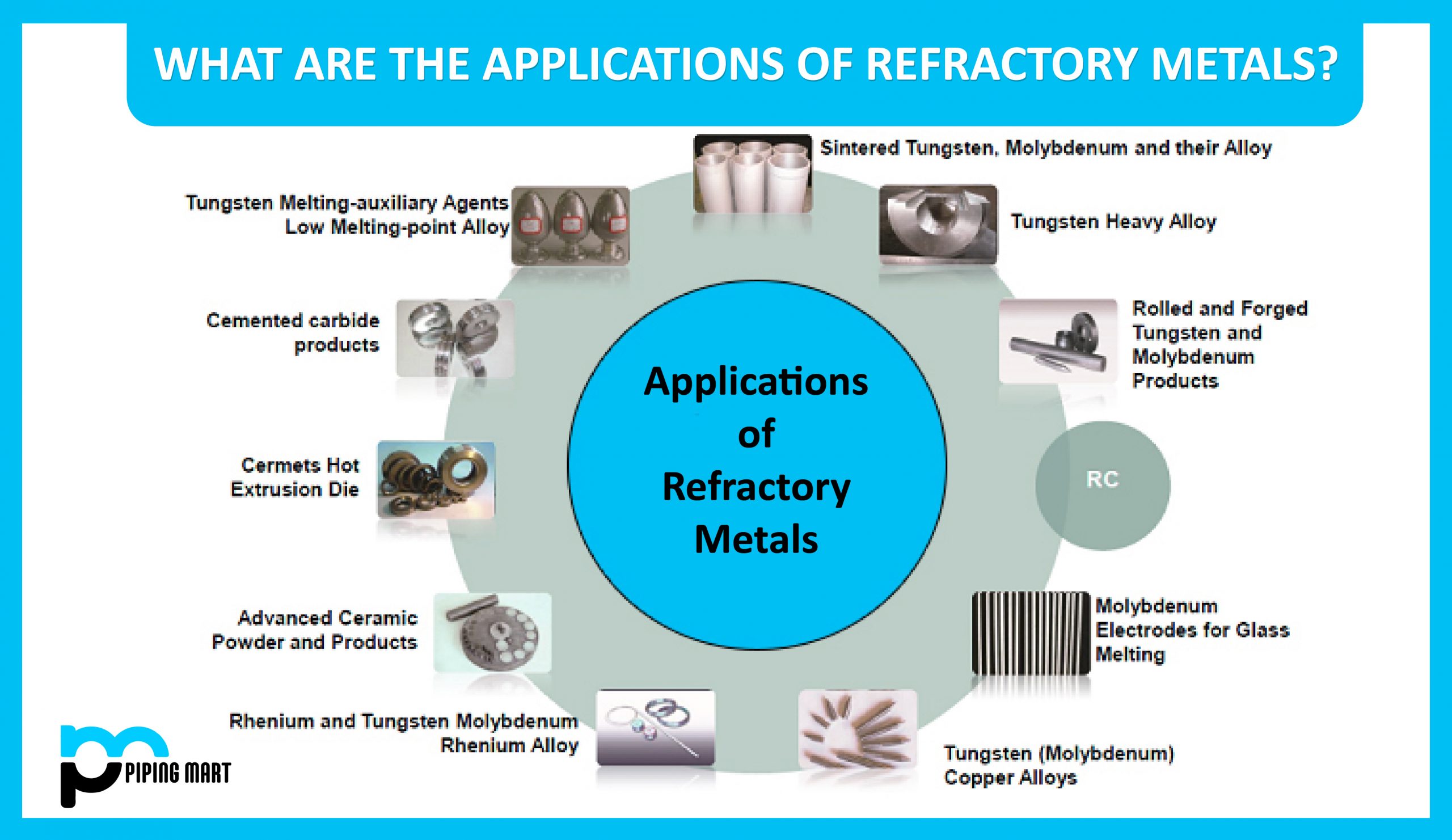Metals that are highly resistant to heat and wear are known as refractory metals. It is widely acknowledged that tungsten, molybdenum, niobium, tantalum, and rhenium best meet the criteria for refractory metals. The melting points of each of these elements are above 2000 °C (or 3632 °F), which is a significant characteristic that unites them. They are all quite dense, largely corrosion-resistant in their pure state, and have greater strength at very high temperatures than other metals. Steels, stainless steels, heat resistant alloys, and super alloys all frequently use refractory metals as alloying components.
They are also accessible in sufficient numbers for general engineering uses. Osmium is one example of a metal with a high melting point that is not typically regarded as a refractory metal because it is rarely used at high temperatures despite having the third highest melting point of any metal (its oxide is toxic). There are only 5 metals that may be referred to as refractory metals. As follows:
- Melting Point of Tungsten (W): 3420°C, BCC
- Rhenium (Re): 3185°C, HCP
- Melting points for molybdenum (Mo), 2623°C, BCC
- tantalum (Ta) are 3017°C, BCC
- Niobium (Nb): Melting Point 2477°C, BCC
Applications of Refractory Metals
Tantalum, niobium, molybdenum, and tungsten are the most widely utilized refractory metals. A wide variety of refractory compounds are made by combining them with other materials. The following is a list of the main applications for refractory metals:
Industrial parts – For applications involving extremely high thermal and mechanical loads, refractory metals are appropriate. Since they have such a wide range of applications, they are also frequently used in glass melting electrodes, furnace boats, sintering trays, rods, sheets, crucibles, shields, tubes, and nozzles.
Aerospace and defense applications – Refractory metals have a wide range of uses in the aerospace and defense industries due to their extremely high thermal and mechanical resilience. Forging dies, thrusters, shields, and balance weights are just a few of the aerospace applications for molybdenum, tungsten, niobium, and tantalum.
Medical industry – Refractory metals are used to manufacture a variety of medical equipment. Tantalum, for instance, is utilized in bone transplants, dental devices, surgical clips, plates for cranioplasties, and more. Tantalum and niobium are used in MRI scanners, whereas molybdenum and tungsten are used in medical scanning devices and radiation shields, respectively.
Super alloys – Super alloy production uses rhenium as an addition. When rhenium is combined with iron, cobalt, nickel, tungsten, and molybdenum, the creep strength of super alloys increases significantly, making these alloys appropriate for the production of gas turbine and jet engine parts.
Electronics and semiconductors industry – Refractory metals are utilized to create lasting electrical components by alloying with copper, gold, or silver due to their high electrical conductivity. They are frequently used to make cathodes, anodes, and casings.
Nuclear applications – In the nuclear business, niobium, molybdenum, and tungsten are frequently utilized materials. Radiation shielding is made of tungsten, while the structural parts of nuclear reactors are made of niobium zirconium alloy.
Corona discharge – The plasma curtain formed when the air surrounding a conductor is ionized is known as a corona discharge. The most common and effective method is to use tungsten wire. Only tungsten wire generates enough ionization and surface alteration for use in air filtration, printers, copiers, and other applications.
Thermoelements – The production of thermoelements mostly use tungsten-rhenium and molybdenum-rhenium alloys.
Superconducting magnets – Superconducting magnets are also made using niobium alloys. Those who use these superconducting magnets include:
- Magnesium-based imaging (MRI).
- the use of nuclear magnetic resonance equipment (NMRI).
- Particle accelerators, like the Large Hadron Collider in Europe, which is home to the largest superconducting magnets in the world.
- capacitors made of electrolytes and superconductors.
Thus, High hardness, high melting temperatures, strong density, high wear resistance, good corrosion resistance, and low oxidation resistance are all characteristics of these metals. In high temperature applications including welding electrodes, heating coils, rocket parts, and gas turbine blades, refractory alloys are frequently used.

Pipingmart is B2B portal specializes in industrial, metal and piping products. Also, share latest information and news related to products, materials and different types grades to help business dealing in this industry.




